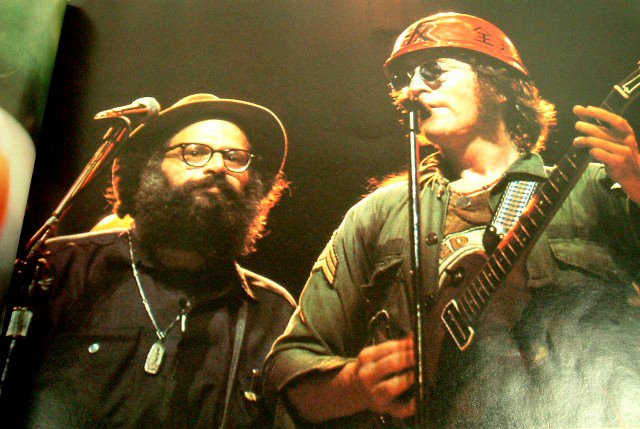“Don’t let yourself die without knowing the wonder of fucking with love.”
Gabriel García Márquez
Memories of My Melancholy Whores
 Wasserschlangen I or Freundinnen I (Water Serpents I), 1904 Gustav Klimt’s painting on the book cover of the English version of 眠れる美女
Wasserschlangen I or Freundinnen I (Water Serpents I), 1904 Gustav Klimt’s painting on the book cover of the English version of 眠れる美女
House of the Sleeping Beauties is a 1961 novella by the Japanese author Yasunari Kawabata. A story about a lonely man, Old Eguchi, who continuously visits the House of the Sleeping Beauties in hope of something more. As the great Japanese writer Yukio Mishima expresses it perfectly in his introduction, this book is a pregnant reflection on ‘the terror of lust by the approach of death.’
Memories of My Melancholy Whores, Gabriel Garcia Márquez’s last written work, has some similarities to Kawabata’s short novel, which Marquez even quotes in the epigraph:
“He was not to do anything in bad taste, the woman of the house warned old Eguchi. He was not to put his finger into the mouth of the sleeping girl, or try anything else of that sort.”
Kawabata’s book is about an old man who watches sleeping young women and feels himself overwhelmed by desire for them. Marquez’s book is about an even older man who first desires a sleeping young woman, and then feels himself overwhelmed by platonic love. Thus, Marquez inverts Kawabata’s painful yearning into a sentimental fantasy.
And of course he replaces Kawabata’s old man with the typical Marquez protagonist. Marquez protagonists are men who invariably possess amazing virility, miraculous longevity, and larger-than-life charisma. They are never good-looking, but they can always get any woman they want. In this book, the protagonist explains that he had been with 514 different women by the age of fifty. It is also typical for Marquez to give the exact number. It’s not enough for his character to have had great success with the ladies, he has to have had exactly 514 of them. Marquez did this exact thing in Love In The Time Of Cholera, where Florentino Ariza filled some similarly huge number of notebooks with descriptions of his romantic conquests.
In 1982 Gabriel García Márquez wrote a story, Sleeping Beauty and the Airplane, in which Kawabata is specifically alluded to. Seated in the first-class cabin of an airplane crossing the Atlantic beside a young woman of extraordinary beauty who sleeps throughout the flight, García Márquez’s narrator is reminded of Kawabata’s novel. As a work of fiction the “Sleeping Beauty” story is undeveloped, no more than a sketch. Perhaps for this reason, García Márquez feels free to reuse its basic situation —the no longer young admirer side by side with the sleeping girl— in Memories of My Melancholy Whores.
House of the Sleeping Beauties is a study of the activities of eros in the mind of a sensualist of an intensive and self-aware kind, acutely—perhaps morbidly—sensitive to odors and fragrances and nuances of touch, absorbed by the physical uniqueness of the women he is intimate with, prone to brood on images from his sexual past, not afraid to confront the possibility that his attraction toward young women may screen desire for his own daughters, or that his obsession with women’s breasts may originate in infantile memories.
FILM ADAPTATIONS
 Das Haus der schlafenden Schönen (Vadim Glowna, 2006)
Das Haus der schlafenden Schönen (Vadim Glowna, 2006)
 Sleeping Beauty (Julia Leigh, 2011). The film is based in part on the novel House of the Sleeping Beauties. In writing the script, Leigh drew from several literary inspirations— Yasunari Kawabata’s novella; Memories of My Melancholy Whores by Gabriel Garcia Marquez; a story in The Bible in which King David as an old man spends the evening alongside sleeping virgins; and the eponymous fairytales by Charles Perrault and The Brothers Grimm. She also noted the phenomenon of images of sleeping girls on the internet, presumably in somnophilia pornography. Mia Wasikowska was originally cast as Lucy but she dropped out when offered the title role in the adaption of Jane Eyre.
Sleeping Beauty (Julia Leigh, 2011). The film is based in part on the novel House of the Sleeping Beauties. In writing the script, Leigh drew from several literary inspirations— Yasunari Kawabata’s novella; Memories of My Melancholy Whores by Gabriel Garcia Marquez; a story in The Bible in which King David as an old man spends the evening alongside sleeping virgins; and the eponymous fairytales by Charles Perrault and The Brothers Grimm. She also noted the phenomenon of images of sleeping girls on the internet, presumably in somnophilia pornography. Mia Wasikowska was originally cast as Lucy but she dropped out when offered the title role in the adaption of Jane Eyre.





